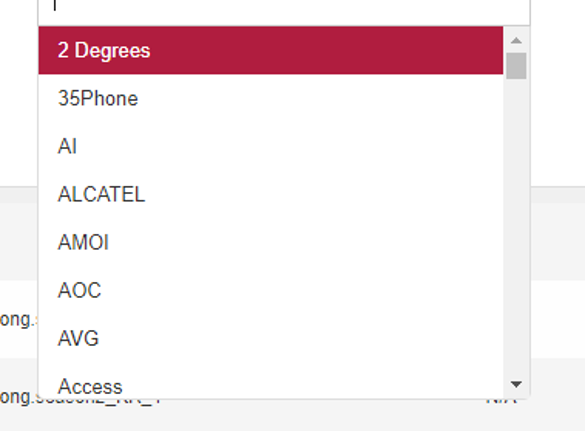Benefits, risks and secrets of in-app advertising

Senior User Acquisition Manager, Zorka.Mobi
Advertising in mobile applications or in-app advertising is a relatively new way to attract users. As a separate source of traffic, in-app appeared as early as 2013, but then neither advertisers nor agencies paid attention to it. The conditions on which the effectiveness of the source depends, were not clear: how and where to place an advertisement, to whom it will be shown, whether it will bring the desired ROI? I will try to answer all these questions in the article.
1. How in-app works
Only in 2015, technological solutions began to appear on the market, designed to rectify the situation and make the process of purchasing in-app advertising easier and more understandable. With the development of technology and accumulation of experience by media buyers, more and more sites appeared on the mobile advertising market that united publishers (publishers) and advertisers. The procurement process for them is also simplified: clear interfaces and advanced options for setting up advertising campaigns have appeared.
')
The principle of operation of such sites is the following: publishers provide their applications for advertising, while advertisers are able to choose the right sources. The advertiser enters the site, selects certain targeting, sets up the categories of applications in which he wants to show ads, and launches the campaign. The main format of creatives is banner advertising. Video or text is used less frequently.
Targeting capabilities in in-app advertising are significantly inferior to tools on social networks, but, in turn, sometimes provide completely unexpected targeting. For example, it is possible to target even rare models of smartphones or choose the user's location: home, work, other countries.

Targeting by phone models in Avazu.
In the case of advertising inside applications, user reach is a more important metric. Here, this figure is on average higher than that of other traffic sources.
2. Advantages of in-app advertising over other sources
New users. The active growth of mobile traffic, the struggle for users and high competition lead to the fact that advertisers become more difficult to find their audience. The usual sources of traffic (myTarget, Facebook, Google, etc.) will be “squeezed out” sooner or later. And here the question arises: where to look for new users?
In-app today is a trend, and if you look into it, you can get good results. The main task of the media buyer in working with this source will be a thorough filtering of transitions. However, a large amount (including not the highest quality) of traffic can confuse a beginner who is used to a limit of 100-500 rubles. on campaign in myTarget.
Wide coverage and high-quality audience. A distinctive feature of most sites for the purchase of in-app traffic is that they provide the ability to target categories of applications within which advertising will be displayed.
The coverage in this case is practically unlimited, and the quality of the audience with high-quality settings is very high, because we find users who already use applications of this kind. Often, the manager will not be interested in gender or age, if the system immediately determines that a person uses similar applications.
Scalable. Large volume and work with “wrung out” offers (in case in-app is a new source for the advertiser). Opportunities in-app are now expanding rapidly, because market participants are paying more and more attention to this format.
3. Risks and disadvantages
High CPI rates. The table below shows the average minimum rates for different regions and platforms for in-app traffic.

In-app minimum bids, $.
It should be borne in mind that these are minimum rates - in other words, a guarantee of not very high-quality traffic. These rates are enough to just run the campaign and get at least something. But for a successful campaign with a high-quality audience, it is recommended to use rates at least 15-20% higher than the minimum.
In-app advertising is not for everyone. Unfortunately, in-app advertising cannot be called a universal source. Due to the lack of flexible targeting campaigns and high CPI rates, advertisers may have difficulty in working with the source. On some in-app traffic sites, the country is considered the minimum geotargeting unit. This means that for local products this type of advertising will be ineffective.
The option to advertise inside applications is not suitable for those who decide to launch campaigns for their application for the first time (and, again, because of targeting). Advertising “run-in” is best done on traditional sources, where you can test approaches with different audiences with maximum accuracy and compare expectations and reality.
4. Conclusions and recommendations
- If you understand that the audience from traditional sources ends and thins out - feel free to try in-app advertising.
- To attract a high-quality audience, for example, in Russia, start at $ 0.75 and $ 1.2 for Android and iOS, respectively.
- When launching campaigns and during rotation, try to respond quickly to changes in statistics. Check the quality of new publishers, put a percentage of poor-quality traffic in the rate and be ready for it in the first stages.
- Be prepared for unusual CR indicators in an install, especially if you have a strong expertise on social networks and contextual advertising. In the case of in-app traffic, the logic of the purchase and rotation is completely different. Ads are displayed while using the application and most often are simply closed by the user, even though the source and application categories are similar. Thus, in most cases, you will see a huge number of clicks, a small part of which will eventually be targeted. This is not beneficial for those who use pay-per-click trackers, but even in this case, you can optimize the campaign: however, some of the target sites will have to be turned off.
Bonus - Opinion advertisers
In preparing the material, we also found out what the specialists on attracting users on the advertisers side think about in-app format.
Inna Bakunovich
Lead User Acquisition Manager, Wargaming Mobile
- Taking into account how many applications appear in the stores and on the devices of users daily, in-app traffic is an opportunity to receive significant volumes using fixed CPI. This is a kind of insurance, if we compare it with SEM traffic and from social networks, where eCPI can sometimes be “loose” from time to time, since the purchase takes place via CPM / CPC. However, do not forget about Frode, which grows in proportion to the growth of this inventory.
Also, after conducting a series of tests that require a good budget, you can find well-performing publishers and through individual campaigns try to redeem their traffic to zero. The disadvantage of such campaigns is that they will not last long at several publishers, their audience is exhausted, and nobody canceled the competition.
Denis Nuzhdin
Mobile Marketing Manager, QUELLE (OTTO project)
- Connecting in-app traffic is a good way to increase the amount of installations when you have already reached the ceiling on Facebook, MyTarget and Google AdWords. Additional installation volume helps to rise higher in the tops and search results, which significantly reduces eCPI. If you play with the formats and targeting of mobile grids, you can get a solvent audience at a relatively low price. I advise you to carefully monitor the quality of traffic, as the percentage of fraud in the in-app is several times higher than in traditional sources.
Stanislav Izmailov
Marketing Manager, BlaBlaCar Russia
- I see the main advantages of in-app networks in the additional targeting capabilities and isolation from large, classical sources. Targeted traffic on Google and Facebook is not infinite, and for some companies it may not be suitable for the economy. The main drawback of in-app for me is the need to constantly combat mobile fraud.
Sergey Konev
Mobile Marketing Manager, Stoloto
- If the task is to multiply the volume of installations and other key actions in the application, while the classical sources of traffic have already exhausted their potential - then in-app traffic is the best way to try to solve it. Use this source is only after a clear understanding of the audience and effective approaches.
As a rule, the highest ROIs are shown by static creatives, but you shouldn’t be abandoned as well. It is necessary to connect the antifraud system in advance, because one of the biggest drawbacks of in-app traffic is fraud.
This fact should warn against conducting the first tests immediately on a large number of sources and on large volumes of traffic. It is better to start with a single flagship, progressively increasing coverage.
Stanislav Bukreev
Head of Mobile, YouDo
For me, in-app networks are of great interest primarily for retargeting campaigns: as another channel where we can catch up with our users. Given the low price (in comparison with other sources) and a large amount of traffic, in-app networks, with proper configuration, can be excellent with unit-economy. A significant drawback, in my opinion, is the generally lower quality of installations (our experience) and the large amount of fraud.
Source: https://habr.com/ru/post/351790/
All Articles